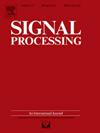QP-adaptive compressed video super-resolution with coding priors
IF 3.4
2区 工程技术
Q2 ENGINEERING, ELECTRICAL & ELECTRONIC
引用次数: 0
Abstract
Video super-resolution algorithms have found widespread applications as post-processing techniques in down-sampling based coding methods. With the advancements in deep learning techniques, video super-resolution has achieved remarkable success. However, applying existing video super-resolution methods to compressed videos requires training specific models for various quantization parameters (QPs), significantly increasing the resource consumption for model training and compromising their practical utility. To address this issue, we propose a QP-adaptive network for compressed video super-resolution based on coding priors (QPAN). Firstly, we design a QP modulation module (QPMM), which can utilize the frame-wise QP to recalibrate feature maps. Then, on the basis of QPMM, an adaptive multi-scale prior fusion module (Ada-MSPFM) and an adaptive enhancement modulation module (Ada-EMM) are constructed. The former effectively integrates multi-scale features from spatial coding priors in the bitstream and multi-scale features from the decoded video frames. And the latter improves the expressive ability of the network by leveraging QP modulation and reinforcing feature flow adaptively. Extensive experiments demonstrate the highly flexible and adaptive of our proposed method, which exhibits superior reconstruction performance compared to state-of-the-art video super-resolution algorithms.
求助全文
约1分钟内获得全文
求助全文
来源期刊

Signal Processing
工程技术-工程:电子与电气
CiteScore
9.20
自引率
9.10%
发文量
309
审稿时长
41 days
期刊介绍:
Signal Processing incorporates all aspects of the theory and practice of signal processing. It features original research work, tutorial and review articles, and accounts of practical developments. It is intended for a rapid dissemination of knowledge and experience to engineers and scientists working in the research, development or practical application of signal processing.
Subject areas covered by the journal include: Signal Theory; Stochastic Processes; Detection and Estimation; Spectral Analysis; Filtering; Signal Processing Systems; Software Developments; Image Processing; Pattern Recognition; Optical Signal Processing; Digital Signal Processing; Multi-dimensional Signal Processing; Communication Signal Processing; Biomedical Signal Processing; Geophysical and Astrophysical Signal Processing; Earth Resources Signal Processing; Acoustic and Vibration Signal Processing; Data Processing; Remote Sensing; Signal Processing Technology; Radar Signal Processing; Sonar Signal Processing; Industrial Applications; New Applications.
 求助内容:
求助内容: 应助结果提醒方式:
应助结果提醒方式:


